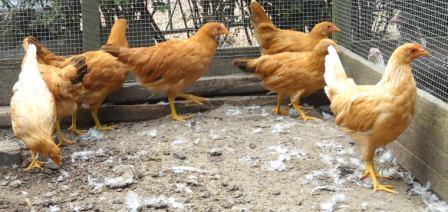- Thread starter
- #31
- Feb 9, 2010
- 52
- 0
- 29
Hi All
Well i got a couple of pictures of a couple of the adult birds today the other were to busy of scratching under the trees....
Ok all these birds are looking a little rough getting towards the end of our summer ....
First pic is of the rooster that had thrown the dark cockerals ....

this pic is of a young hen i have 2 of these this iis the better of the 2 the other looks the same but has a little peppering in her tail these are what the light cockerals are out of by a different roo...

The hen on the left is is out of the group that the darker cockerals are out of by the above roo the one on the right is the above hen....

This is a pic of the cockeral that i used with the first hen to get the lighter looking cockerals and the pullet in the other pictures. But i lost him so i only have young by him now.

I hope that helps paint a better picture as what the young birds came from and what i have to work with all the adult birds have been free ranging for the last 2 months in full sun so colour is a little lighter then what it is when first moulted .....
cheers shane
Well i got a couple of pictures of a couple of the adult birds today the other were to busy of scratching under the trees....
Ok all these birds are looking a little rough getting towards the end of our summer ....
First pic is of the rooster that had thrown the dark cockerals ....

this pic is of a young hen i have 2 of these this iis the better of the 2 the other looks the same but has a little peppering in her tail these are what the light cockerals are out of by a different roo...

The hen on the left is is out of the group that the darker cockerals are out of by the above roo the one on the right is the above hen....

This is a pic of the cockeral that i used with the first hen to get the lighter looking cockerals and the pullet in the other pictures. But i lost him so i only have young by him now.

I hope that helps paint a better picture as what the young birds came from and what i have to work with all the adult birds have been free ranging for the last 2 months in full sun so colour is a little lighter then what it is when first moulted .....
cheers shane


 of breding the wrong birds together...
of breding the wrong birds together...








